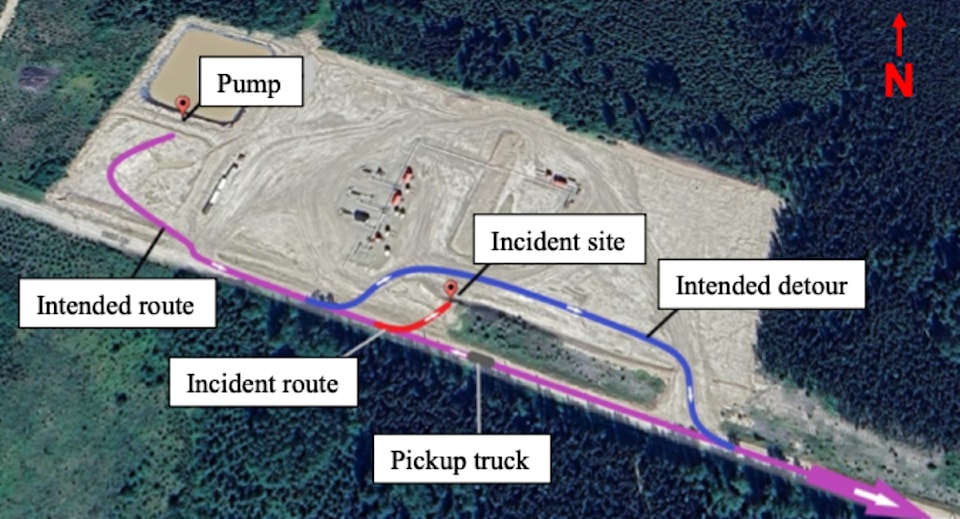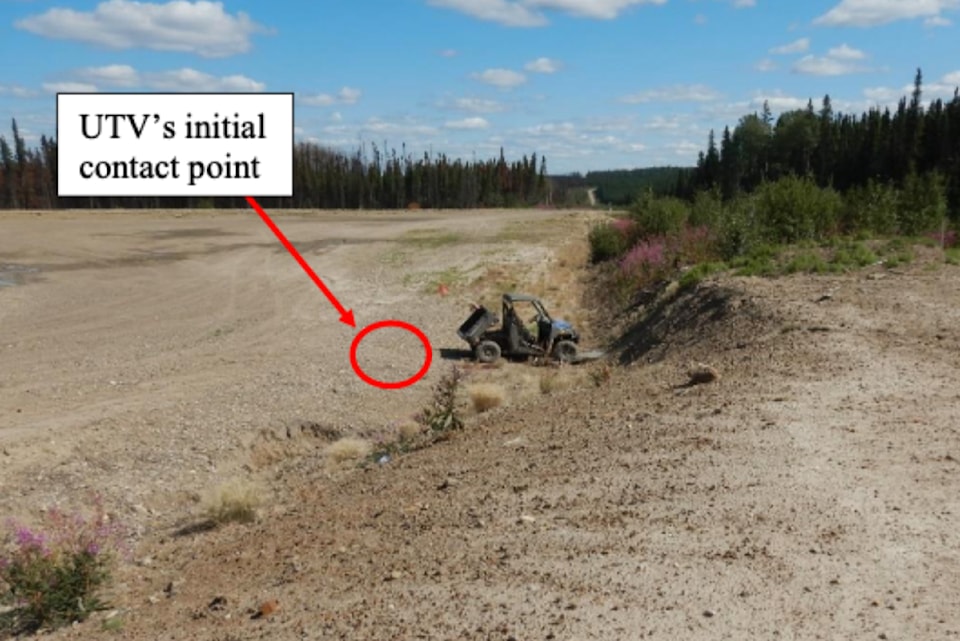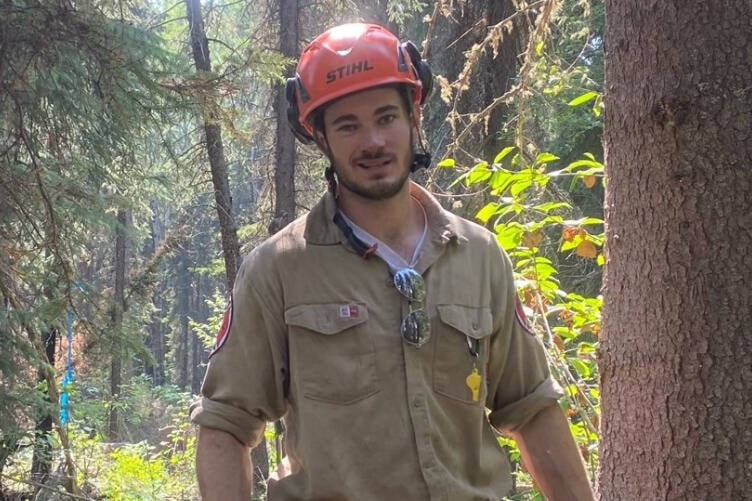A WorkSafeBC report says a pre-use inspection of a utility terrain vehicle was not done prior to a fatal crash involving a B.C. wildland firefighter – and at least one occupant wasn't wearing a seatbelt.
Zak Muise, 25, was killed after the UTV he was in with his supervisor rolled over an embankment while their crew was working on the Donnie Creek wildfire about 150 kilometres north of Fort St. John on July 28, 2023. He was transported by helicopter to Fort St. John airport, but died while en route, B.C. RCMP said at the time.
READ MORE:
Muise had been living in the Okanagan, but was originally from Ontario. He worked for Big Cat Wildfire, which was contracted out by BC Wildfire Service.
WorkSafeBC shared its 14-page redacted report with Black Press Media Thursday (Aug. 15). The report is dated July 8, 2024.
The report says there was inadequate supervision, a lack of safe work procedures, lack of training and a lack of pre-use inspections.
The crash
The fatal crash happened in a remote area, near Pink Mountain, as crews were working on the Donnie Creek blaze – the largest wildfire in B.C.'s history at more than 500,000 hectares.
On the morning of July 28, 2023, five Big Cat Wildfire firefighters, including Muise, travelled to the 14.5-kilometre mark on Jedney Road, a resource road, for a daily briefing with their supervisor. They then drove to a water-pump site nearby to empty their truck of all BC Wildfire Service equipment, as they were being released from duty later that morning for some days off.
The supervisor and Muise – whose names both remain redacted in the report – then left the site on the UTV to get more fuel. As they were travelling east on the gravel 1200 Road, a pickup truck was heading toward them. To avoid the truck, they turned the UTV north and drove through a ditch to take a detour.

The report has redacted who was driving the UTV.
Either Muise or the supervisor (the report redacts who) saw the four-metre drop off directly in from of the UTV and applied the brakes.
"However, the UTV was unable to stop and it continued over the edge of the steep embankment drop-off," the report states.
As it went over the embankment, the driver-side front tire dug into the side of the embankment, "causing the UTV to shift," resulting in the rear swinging around and crashing to the ground. It rolled and landed on the passenger side.
The supervisor was injured in the crash.
WorkSafeBC's findings: The terrain and the equipment
The report says the road Muise and the supervisor were travelling on is a straight and level roadway, "wide enough for two vehicles to pass one another." Next to the road is an oil and gas worksite that has "two distinct elevations," with the lower section dropping about four metres.
It adds that whoever was driving the UTV applied the brakes "long before the UTV skidded over the edge of the embankment and hit the lower section." The speed the UTV was travelling at is redacted.

The vehicles would be used to transport crews and equipment in areas of the fire complex "where the terrain and pipeline crossings prevented conventional motor vehicles from travelling." The specific vehicle, prior to the crash, was in "good mechanical condition."
The UTV was equipped with door netting on each side, which is meant to reduce the probability of a "properly seat-belted occupant's head, upper torso and limbs becoming trapped between the vehicle and the terrain" in a crash. The quick-release buckle clip for the netting was damaged before the crash and was "tied on to the clip rather than being properly attached. WorkSafeBC says it was ineffective.
It also had three factory-installed seat belts that were operational and ready for use. However, one of the people involved in the crash wasn't wearing his seat belt. The report has redacted who wasn't wearing the seat belt.
BC Wildfire Service also did not ensure that a pre-use inspection of the UTV was completed, the report found. It added that a regular inspection "would likely have identified that the passenger-side retention netting clip was damaged" and that the UTV was not being used according to the owner's manual.
The UTV's owner's manual says the vehicle should be used with seat belts, retention devices and safety helmets approved by the U.S. Department of Transportation. Three approved helmets were provided to the BC Wildfire Service, but the helmets weren't used the day of the crash.
WorkSafeBC's report also says that BC Wildfire Service's off-road vehicle training doesn't include UTV use. The wildfire service didn't provide an written safe work procedures or policies for safely operating UTVs, and it didn't provide anything that instructed worker to use the provided restraint systems.
"BCWS knowingly allowed workers to operate mobile equipment without the benefit of specific UTV safe work procedures. Had BCWS developed and implemented safe work procedures for the safe use of UTVs, those procedures would likely have included requirements for pre-use inspections, use of seat belts, use of retention netting, and use of safety headgear, as well as processes for correcting deficient items and removing UTVs from service."
Second report in 2 days into firefighter deaths
The Forests Ministry, which oversees BC Wildfire Service, said in an emailed statement to Black Press Media that safety procedures have been strengthened and are required for all use of UTVs. That includes the requirement to wear a helmet, seat belt and have retention netting.
Inspections of the vehicles are being required before use, the statement adds.
This latest report comes a day after WorkSafeBC shared its report into the death of another BC Wildfire Service wildland firefighter in 2023.
Devyn Gale, 19, was killed after being hit by a falling "dangerous" tree while working on a wildfire 13 kilometres northwest of Revelstoke on July 13, 2023. She was a third-year wildland firefighter.
In response to that report, BC Wildfire Service's assistant deputy minister Rob Schweitzer said "immediate and specific actions" have been taken to enhance safety and training within the organization.
Black Press Media has reached out to the Forests Ministry and BC Wildfire Service for comment regarding the report into Muise's death.
